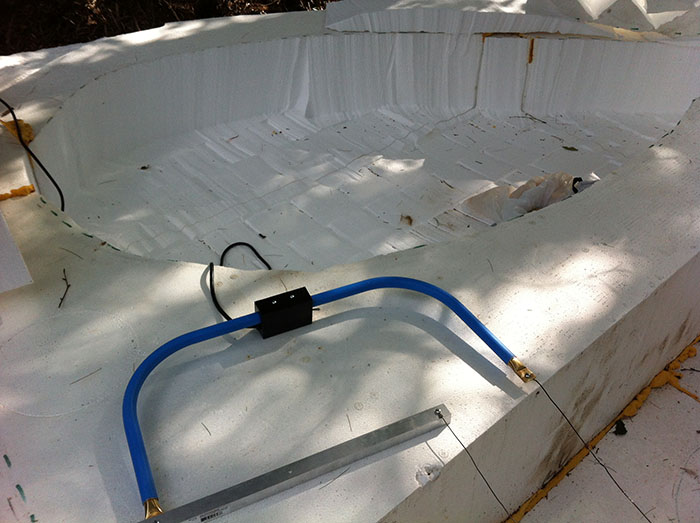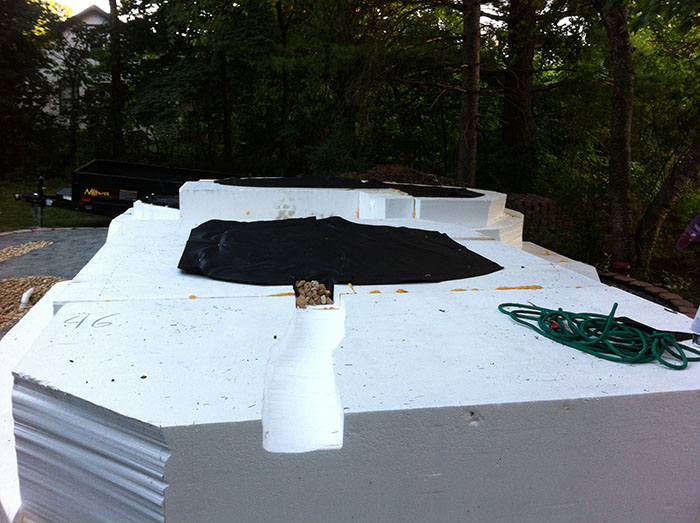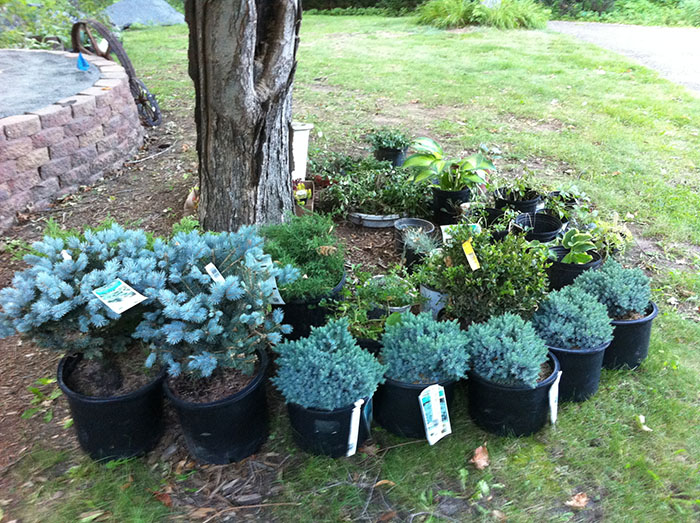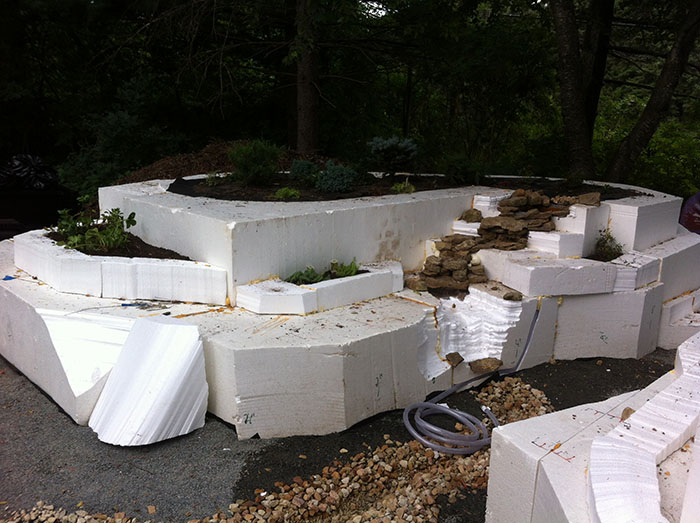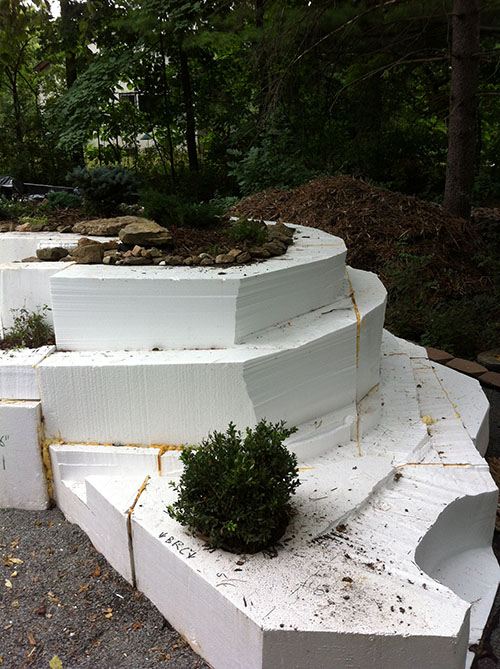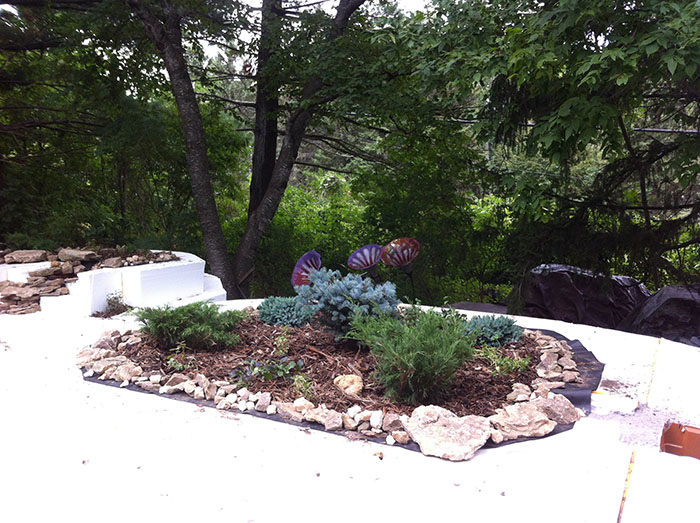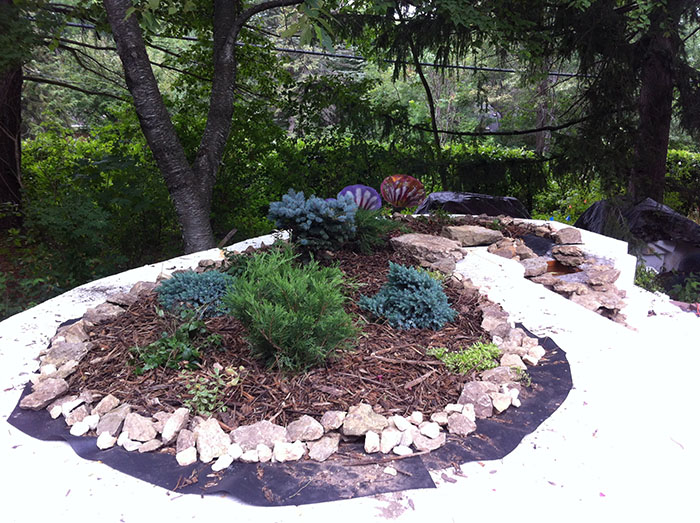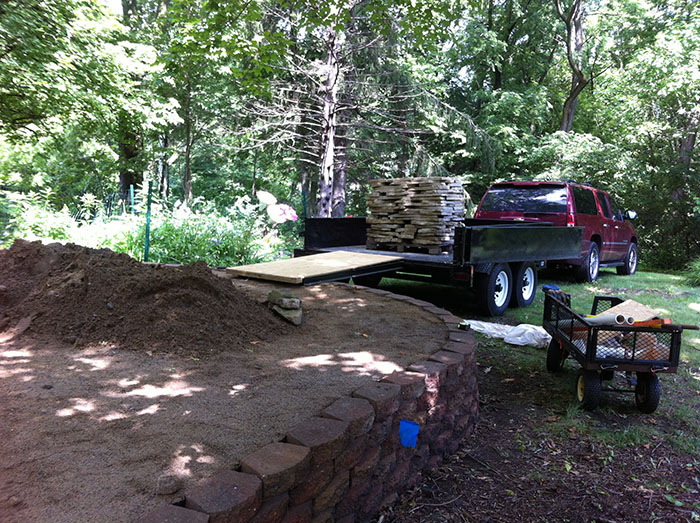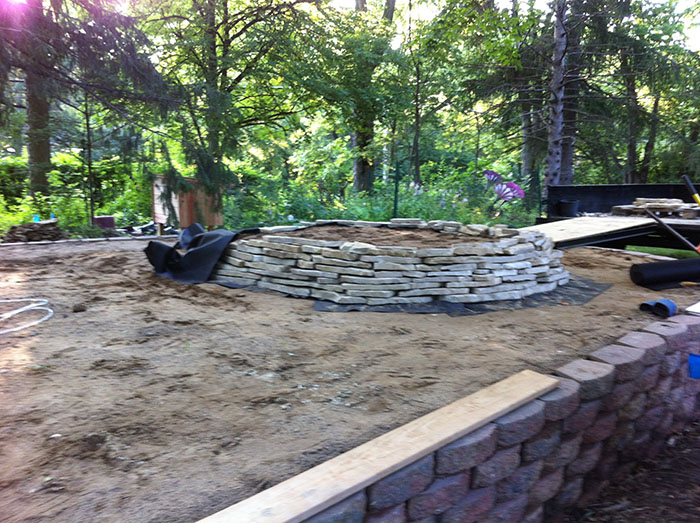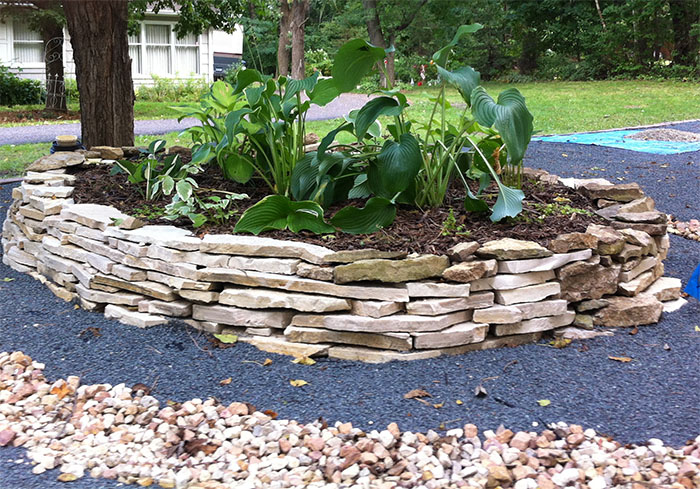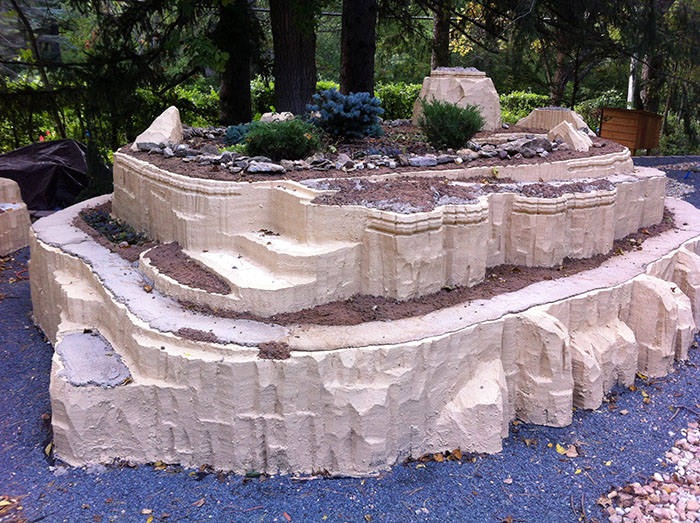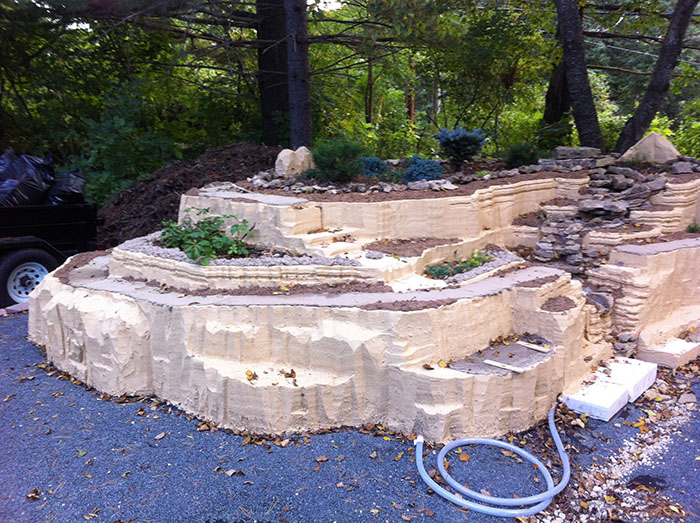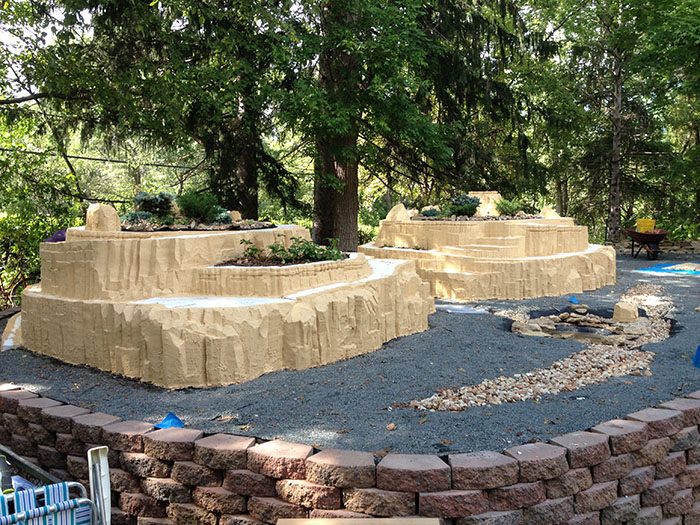
The Garden Part of the Garden Railroad
The plan was to have miniature trees growing on the tops of the mountains. After contemplating a few possibilities, I decided the best way to go about this was to sort of turn the mountains into really big flower pots. I started by carving out the cavities where dirt would go. I used the industrial strength hot wire router to dig these holes in the foam.
Each of the two really big flower pots holds about 1-1/3 cubic yards of dirt. There are drain holes in the bottom that go through all the way down to ground level, plus a few cubic feet of peat moss under the garden mix black dirt on top. My 3000 pound flower pots are a grand experiment - I have no clue how this will turn out.
It was late in the season by the time I got the gardens ready for planting. That turned out to be convenient - everything in the garden center was on sale. I purchased several small junipers and pines, nothing that would be more than 5 feet high or wide full grown. If I start with something that doesn't want to get huge in the first place, then the pseudo-bonsai job will be much easier. The plants on the mountain tops are predominantly pine themed to give the logging train an appropriate backdrop.
In addition to the two big gardens on top (my mini-forests that the logging train will circle), there are a few other small garden spots part way up the mountains. One of them has sedums that look like little pine tree sort of things.
The black dirt was covered with landscape cloth. Holes were cut for planting. Then wood chips were added on top. Nothing to buy there - we only had about 20 cubic yards of wood chips laying around after shredding a few hundred Buckthorn trees. The rock border didn't cost anything either - we picked a few wheelbarrows of rock out of the gardens around the house while trying to plant stuff in those other gardens.
The top of the north mountain looked like this when done.
The top of the south mountain looked like this when done.
My original plan was to make a small "hill" to use excess fill dug up from the ponds. That pile grew way bigger than I anticipated. So I decided to go get a load of flagstone and create another garden instead.
I had only a rough idea of a plan here. Once I saw what size garden I could get out of one pallet of flagstone, I realized I still had too much fill left over. I ultimately dug a lot of that out since this doesn't make for good plant growing soil. I piled the excess fill in my "dirt inventory" area, which has the compactable sand/clay fill, black garden dirt, gray trap, and coarse limestone each in their own pile.
I turned this garden into a Hosta garden. There is absolutely nothing about Hostas that play into the theme or era of the railroad. I'm not modeling a tropical railroad. But tough, I just happen to like Hostas.
The garden on top looks a little better with the rest of the mountain closer to being finished.
You will notice some larger rocks showed up in the rock border around the top gardens. Those are made of foam. Once the color highlights are added, you won't tell them apart from the natural rock (which all of the small stuff bordering the garden is).
Here's a wider angle shot bringing both mountains into view. The difference in color appearance is the lighting, sunlight here versus cloudy day in the two shots above.
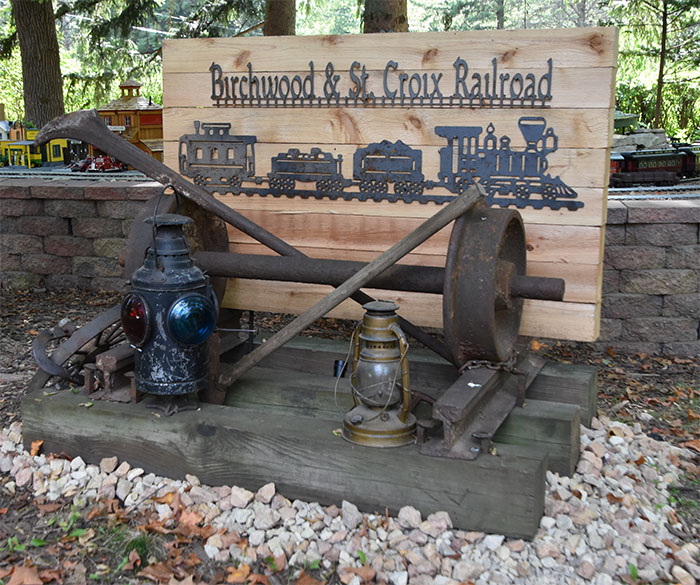
The garden railroad needed a "Welcome" centerpiece. I was just getting started on a collection of stuff for a plan yet to be hatched when I happened to acquire a set of actual narrow gauge train wheels manufactured in 1911 by the Peteler Car Company in Minneapolis, along with a short piece of real track. These wheels had been raised from the bottom of White Bear Lake about 10 years ago. Speculation was that they were from the old trolley that ran from downtown St. Paul to White Bear Lake. My research did not show that the Peteler Car Company was involved in trolley cars. The more definitive clue that they are not trolley wheels is that these are narrow gauge (3’), and the St. Paul trolley ran on standard gauge (4’8”). Since we live right next to the old trolley line, it would have been fun to have actual trolley wheels, but I’m still happy to have real narrow gauge wheels since my layout models narrow gauge railroad.
A civil war sharp shooter, Colonel Francis Peteler, founded the Peteler Car Company in 1870, and is known for inventing and manufacturing the first rail mounted side-dump car which was used to move raw materials quickly for railroad construction. The Minneapolis factory produced these cars as well as Peteler's patented portable railway system. The portable railway was a system of track that could be assembled quickly to bring materials to construction projects, then taken apart and reused later, all without the usual engineering that goes into traditional rail beds and track laying. The wheels in this picture are most likely from one of those portable railway systems.
And then there are the finishing touches. The spike mallet and spike puller were donated by my friend Greg Beckmann. The old signal lamp as well as the real railroad crossing sign you see in the background in some photos were gifts from my wife Joy. My friend David Kott, Kott CNC Plasma Cutting, made the metal name and train silhouette. (https://www.facebook.com/Kott-CNC-Plasma-Cutting-1526890184292920/ if you want to see more of David's work.)

